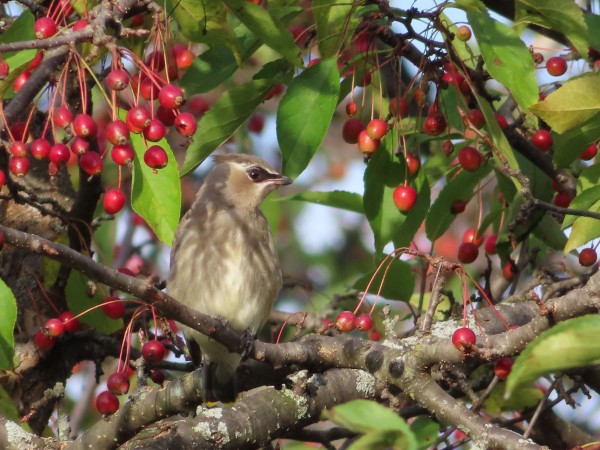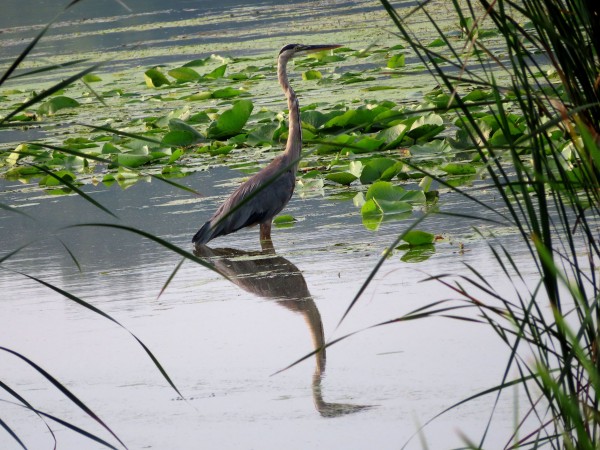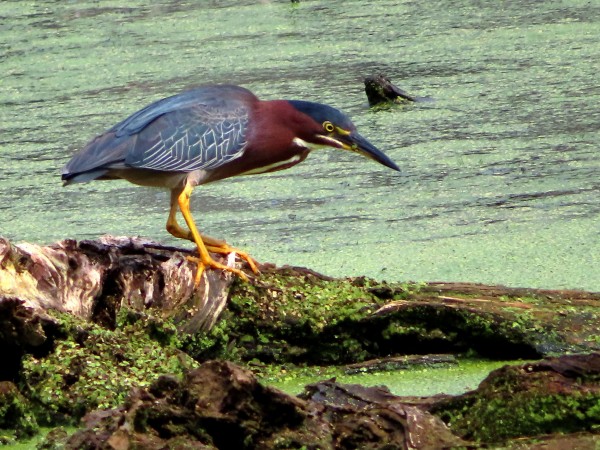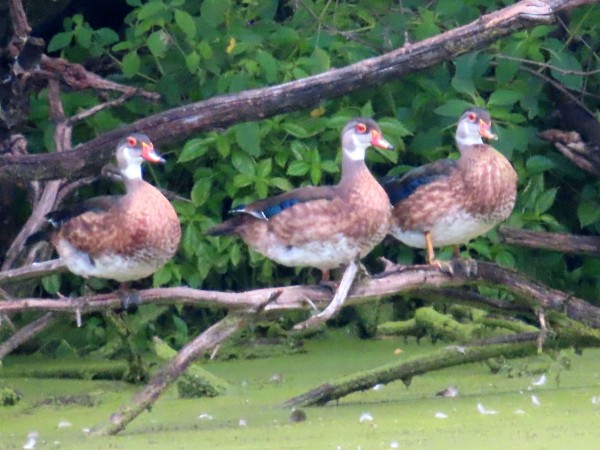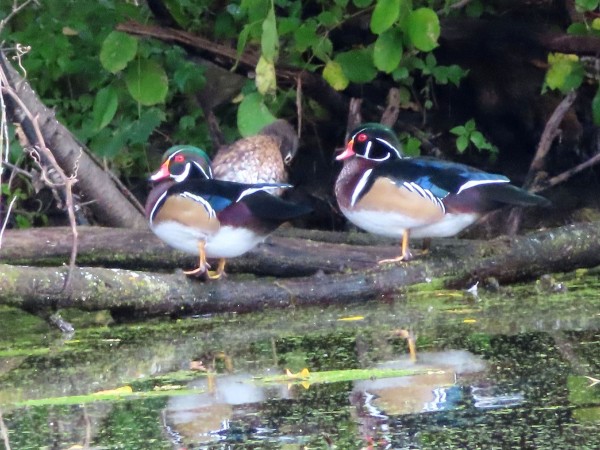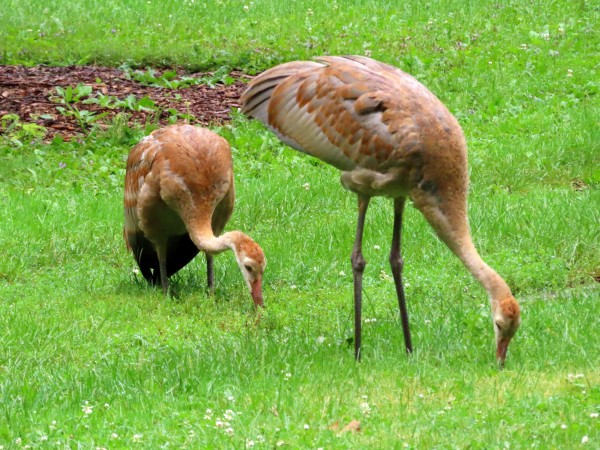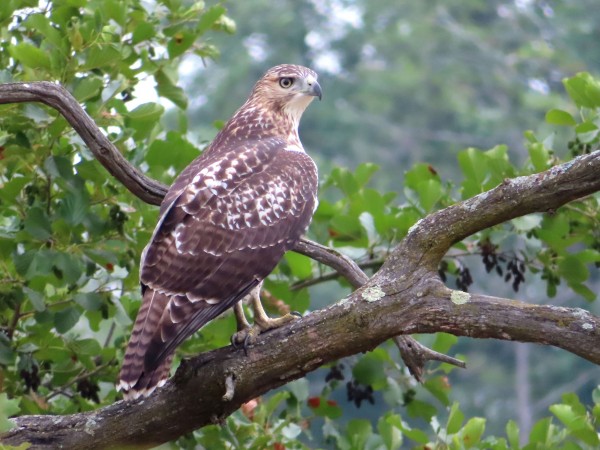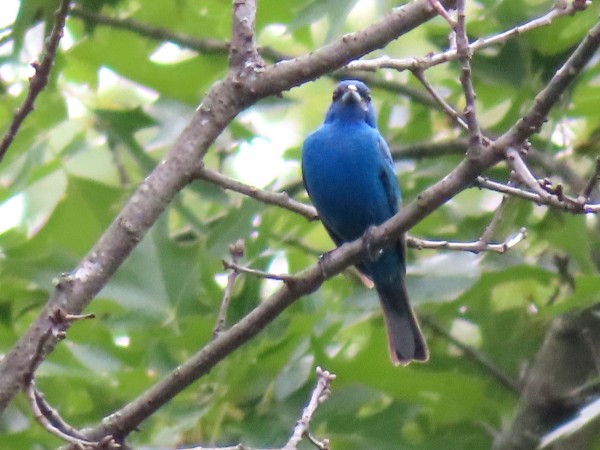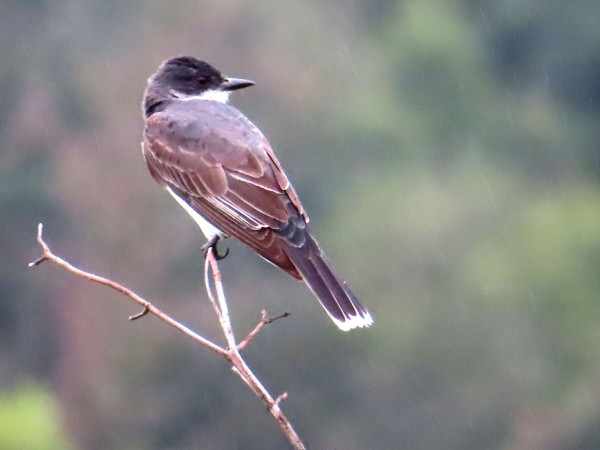Chuck's Birding Report #73
03 August - 09 August 2021
Dear fellow flock of birders,
The vegetation in the Arboretum is continually changing. We have had some much needed rain this past week so that has helped green up and boost all the plants. The tall wildflowers are growing still taller. Yellow is still the dominant color. More Goldenrod is turning yellow. Another wildflower that appeared recently is Jewelweed with its yellow or orange flowers.
What have the birds been up to recently?
The other day when I arrived at the Arboretum and stepped out of the car I thought it was really quiet. I wondered what was missing and then as I scanned the prairie that there were no, not one, Red-winged Blackbird out on Curtis Prairie singing their typical song. There were no black spots and no chasing one another. They have all left and are forming large flocks out in the countryside before migrating south. At least many American Goldfinches are all over the prairie flying around, singing and chasing one another.
I've been seeing increasing numbers of Cedar Waxwings this past week and on Saturday I saw my first juvenile Cedar Waxwing. How could I tell it was a juvenile? The most obvious feature was the blurry tan streaking on the breast and part of the belly. The adults have beautifully clean light yellow breasts. In addition the juveniles don't have well-developed crests or black masks. Today I saw a flock of 8 Cedar Waxwings. They were all juveniles. A photo of a juvenile in a crabapple tree is included.
On Sunday I birded HoNeeUm and the southern end of Gardner Marsh. In both areas I saw Great Blue Herons and Green Herons. The Great Blue Heron nests in the rookery are all empty now and have been for several weeks. The rookery produced about 15-17 young and they are all out and about feeding in the shallow waters of Lake Wingra and other many other lakes and ponds so I've had numerous sightings. The Green Herons are not as numerous in the various parts of the Arb but still I always see a couple in each place. Photos of both a Great Blue Heron and a Green Heron are included.
In the elongated pond along the south end of Gardner Marsh I found and counted 53 Wood Ducks. These Wood Ducks did not have the typical plumage we see in the spring during the breeding season. The young look mostly like adult females. The adult males after breeding leave the females to do all the egg laying and incubation as well as taking care of the young. The males gather with other males and undergo what is called an eclipse molt. The change from spectacular coloration to something more muted but still have red eyes, red orbital rings and red parts of their beak. Later in the fall about mid-September to October they molt again into the breeding plumage we see in the spring. I've included two photos of the Wood Ducks. One is a photo of three males perched on a log near the water that I saw on Sunday. Note how different they look but still retain certain red parts. The other photo is of two males taken in mid-September when they have molted back to their breeding plumage. I still have a lot to learn about these various plumages.
Today I got a late start birding because of the rain. I started at bit after 10:00 and it didn't rain for the first hour but it did rain for the second hour. I had my rain gear on so I was okay. I did see my "kids" this morning. Since I watched the Sandhill Crane Colts grow all summer and the Red-tailed Hawk babies grow up too, I feel they are my "kids" growing up before me. I've included photos of both. The crane colts were feeding with their parents on Longenecker Gardens. The one colt is partially on the ground with its tibiotarsal bone vertical and its tarsometatarsal bone and more distal bones horizontal. That way it doesn't have to bend its neck so far down to feed. The other colt is standing normally. The parents are just out of view.
I've been seeing either one or both immature Red-tailed Hawks mostly in the snag down near Pond 2. Note the color of the tail in the immature hawk. It is not the rusty red of the adult, it is brown with numerous horizontal brown to black stripes.
I'm still seeing 5 to 6 male Indigo Buntings from western Curtis Prairie to Juniper Knoll. I've also gotten brief looks at females but they never perch long enough to get any photos. One photo of the male with that amazing blue plumage is included.
My last photo is of an Eastern Kingbird that I saw today. I think we may have had one pair nest in the Arb but now a number of migrants are beginning to arrive. In my opinion they stop here for the delicious berries of the numerous Elderberry bushes. At least in past years that's where I find most of them feeding in the fall months. I saw 6 today so they are beginning to arrive.
One other quick observation is that I'm seeing more female and young Ruby-throated Hummingbirds in addition to the males.
That's the bird report for this past week.
Good health to all of you and good birding too,
Chuck

